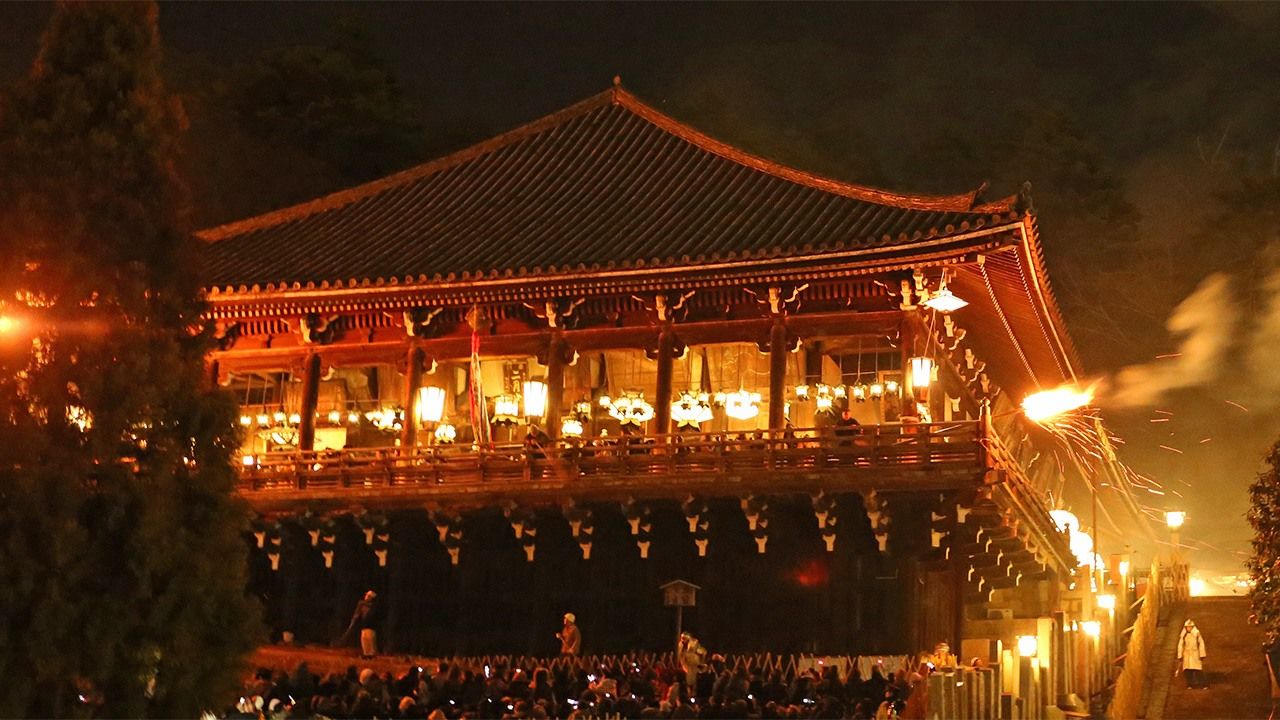
A Journey Through Japanese Haiku
Clattering Shoes
Culture Environment Lifestyle- English
- 日本語
- 简体字
- 繁體字
- Français
- Español
- العربية
- Русский
水とりや氷の僧の沓の音 芭蕉
Mizutori ya / kōri no sō no / kutsu no oto
Spring rite—
icy monks,
the sound of their shoes(Poem by Bashō, written in 1685.)
The Buddhist temple Tōdaiji in Nara holds a series of ceremonies from March 1 to 14 called Shunie across most of Japan, but known locally as Omizutori. These involve the temple’s monks carrying huge torches up to the Nigatsudō hall and swinging them to scatter sparks from the balcony. These sparks are thought to ensure good health, so worshipers gather beneath.
The monks’ wooden footwear clatter and resound as they perform the ceremony in Nigatsudō. The name Omizutori for the whole period comes from a specific rite performed in the early hours of March 13, in which water is drawn from a well beside the hall and offered to the Kannon image enshrined within.
Bashō’s haiku is taken from his collection Nozarashi kikō (translated by Steven D. Carter as Bones Bleaching in the Fields). His preface to the poem states that he is “In retreat at Nigatsudō,” suggesting that he was staying in the hall when he heard the sound of the monks’ sandals. One can take the phrase “icy monks,” as referring to the severity of their ascetic practices.
Beyond the surface of the poem, there is a play on words with mizutori referring to both the rite and another meaning of “water birds,” such as ducks, which the poet compares to footwear in their shape, upon the icy pond.
(Originally published in Japanese. Banner photo © Pixta.)